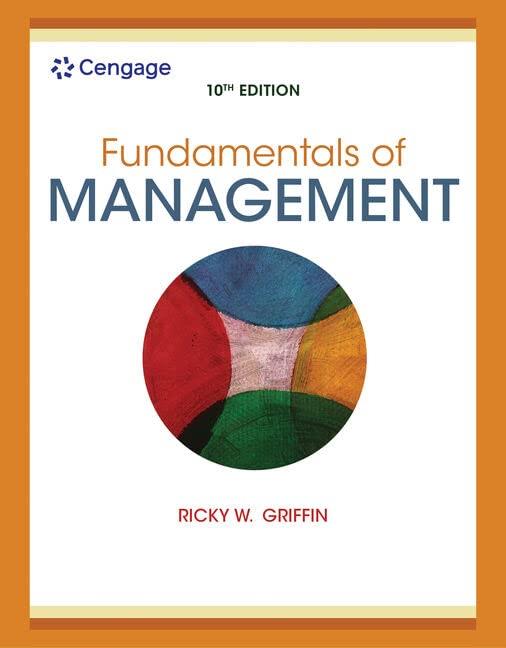As we saw in this chapter, effective managers must be prepared to switch back and forth among
Question:
As we saw in this chapter, effective managers must be prepared to switch back and forth among the four basic activities in the management process. They must also be able to fulfill a number of different roles in their organizations, and they must exercise a variety of managerial skills in doing so. On top of everything else, their schedules are busy and full of tasks—personal and job-related activities that require them to “switch gears” frequently throughout the workday
Stephen Covey, a management consultant and author of The 7 Habits of Highly Effective People, has developed a system for prioritizing tasks. First, he divides them into two categories—urgent and critical. Urgent tasks, such as those with approaching deadlines, must be performed right away. Critical tasks are tasks of high importance—say, those that will affect significant areas of one’s life or work. Next, Covey plots both types of tasks on a grid with four quadrants: A task may be urgent, critical, urgent and critical, or not urgent and not critical.
Most managers, says Covey, spend too much time on tasks that are urgent when in fact they should be focused on tasks that are critical. He observes, for example, that man agers who concentrate on urgent tasks meet their deadlines but tend to neglect such critical areas as long-term planning.
Exercise Task
1. First, make a list of your current activities, projects, and so forth. Think of this as your “to-do” list. Identify at least ten things. Try to include a variety of things both job or school related and also personal in nature. Number them in the order in which you are currently planning to do them.
2. Next, label each of these as being urgent, critical, both, or neither. For example, if “go grocery shopping” is on your list and you have no food at home it may be both urgent and critical. But, if you have plenty of food at home but want to shop for a special dinner you plan to cook next week, this might be critical but not urgent.
3. Examine how your numbered list from step one matches your labels in step two. That is, are you planning to tackle activities and projects that are both urgent and critical first? Based on your labeling in step two, how might you more efficiently change the order in which you plan to do things?
4. Think of a task that you regularly perform and which, if you were being perfectly honest, you could label not urgent and not critical. How much time do you spend on this task? What might be a more appropriate amount of time? To what other tasks could you give some of the time that you spend on this not-urgent-not-critical task?
5. What one thing can you do today to make better use of your time? Try it to see if your time management improves
Step by Step Answer:






